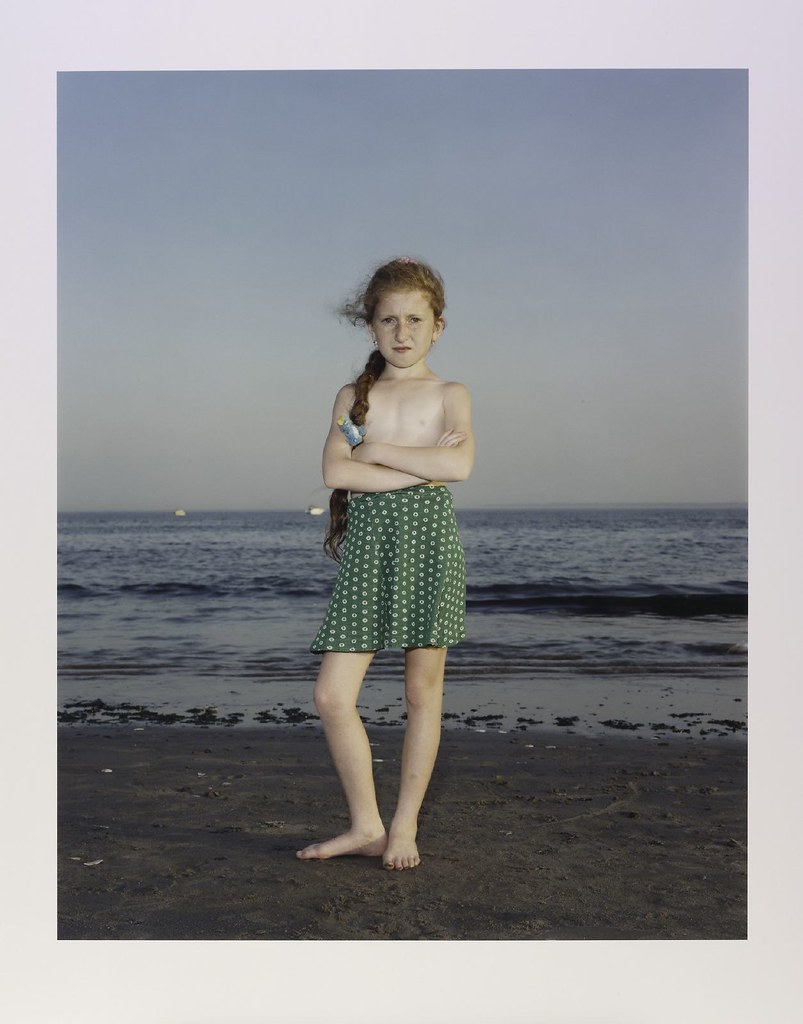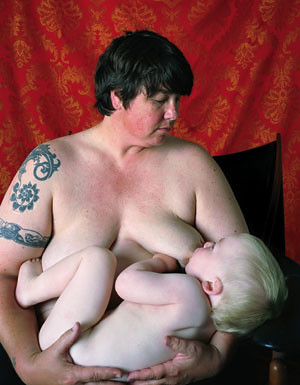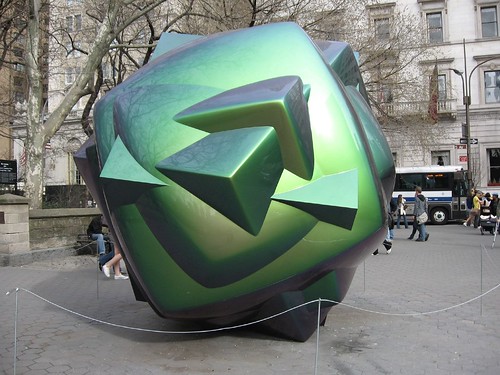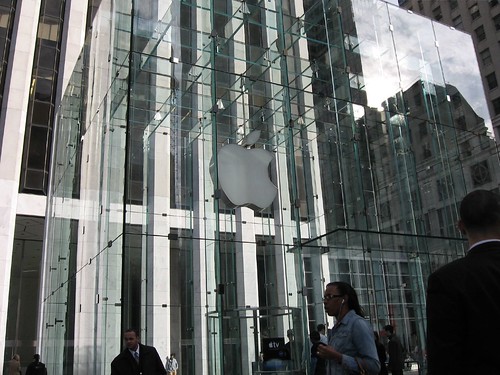
Alex’s toys and marketing merch
Alex is 29 tomorrow, so we went to New York mainly to take him out to dinner. Since my main mission in New York had to do with family, not art, it seemed appropriate to go to Family Pictures, an exhibit at the Guggenheim Museum that’s still up for a couple more weeks.
The exhibit of 40 pieces, including mostly photos and video drawn from the museum’s collection, included some work I knew, some I didn’t, but seeing it together brought up the same old issues of portraiture, manipulation, prurience and how are art photos different from family snapshots. So just to keep us all on our toes, I put up what I consider to be a portrait of my son, which definitely qualifies as a snapshot (ok, all my pictures qualify as snapshots).

Job Hunt, 1976, 1994, photolithograph on paper, A.P., edition of 50, 31 1/2 x 23 1/2 inches, Solomon R. Guggenheim Museum, © Tracey Moffatt
For me the highlights were the nine Tracey Moffat narrative photos with brief captions of family betrayal. Without the captions, Moffat’s photos are merely sad. With the captions, they are devastating.
As in almost every photo in the exhibit, the point is that life is not as we would have it be–the province of snapshots, smiling, happy, the perfect family.
We live in an age where secrets are not for keeping but for revealing, exploring uncovering. Better to tell the painful truth than to live the lie. That’s our contemporary culture’s motto. And that’s the point of view of nearly every one of these photographs, probing the shocking and the prurient and the not-very-nice, redefining family, childhood, sexuality, sexual identification, flesh, motherhood. In other words, they elicit a squirm response or at least a raised eyebrow response, plus some thoughts, as opposed to family snaps which elicit an aaaah and a very nice and a let’s move on to the next one.

Coney Island, N.Y., USA, July 9, 1993, 1993, C-print, Edition 3/6, 62 5/8 x 50 1/2 inches (152.4 x 127.2 cm), Solomon R. Guggenheim Museum
I did find some of them most annoying. Were Robert Mapplethorpe’s photos of exposed children more about them or more about him? Clearly more about him, with a little about the subjects. How about Sally Mann’s? On the other hand, Rineke Dijkstra, represented by three large portraits of children, seemed less about exposure and more about the character of her subjects. Kolobrzeg, Poland, July 27, 1992, of two Polish boys on the beach in their underwear, seemed more about cultural norms and less about exposure–although the boys postures suggested they may have felt a bit exposed.
The parent-child interactions between Patty Chang and her parents and Janine Antoni and her parents–pieces I had seen before and accepted as is–suddenly seemed perverse to me, a manipulation that is totally one-sided. Who are these amazing parents that are willing to play their children’s extreme games?

Catherine Opie‘s Self-Portrait/Nursing, on the other hand (oh, it’s from the mom’s point of view after all, so it’s different) offers an unblinking portrait of a serious mountain of flesh and symbiotic body parts of mom and baby all in visual conversation, with a tough-girl tattoo on Opie’s arm placing the image in a specific culture at a specific time at the same time that it raises sexual identification issues. This is not the Blessed Virgin, and yet it is, at the same time that it refers to all those Tintorettos and Bouchers and seraglios with intertwining, overheated limbs.
Another self-portrait about children Gillian Wearing’s Self-Portrait at Three Years Old, completely seemed out of place in the array of overheated photos of children. Sexuality and hatred and self-hatred and love are not on the table in Wearing’s work. In this context, I would think it might be a hard leap to get to the question of what this photograph represented and why.
To put it another way, “not normal” and repositioning what’s normal is what gives a large percentage of these photos their kick, from Loretta Lux to Nan Goldin to Thomas Struth (his portrait of Gerhard Richter’s family, that ran in the New York Times Magazine section). In this company, Gregory Crewdson’s Untitled (pregnant woman/pool) looked positively normal in a red-neck sort of way.

A vendor’s display near Central Park.
After the Guggenheim, we walked through Central Park, looking at spring springing, people springing, etc. We passed a posse of about eight or 10 Chinese portrait artists, who were doing a brisk business. Then we passed a more traditional-looking artist with a white beard.

Liz Larner, 2001, on 59th Street and 5th Avenue
After the Guggenheim, we walked through Central Park, at the south end of which we found an enormous car-painted sculpture by Liz Larner, 2001. Put there by the Public Art Fund, it looked a lot like a giant version of Patricia Piccinini’s car nuggets, except it had a sci-fi vibe. I liked looking at the auto-paint finish on the space ball. But mostly, its puzzling geometry and surface dominated any content about outer space. The Apple Store across the street was far more space-age-y. I watched as people slid by 2001 with barely a glance. It’s a little opaque for public art.

The Apple Store, across the street from Liz Larner’s space ball.
As for dinner at Peter Luger with Alex, it was 19th century, but really great, and I don’t even love steak.









